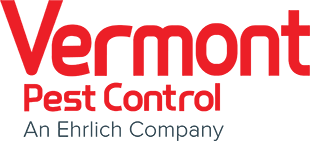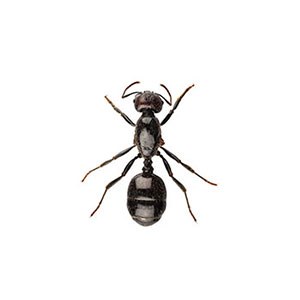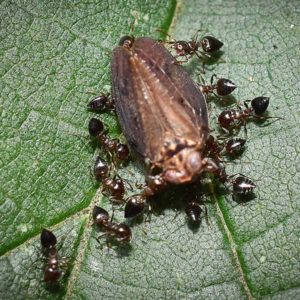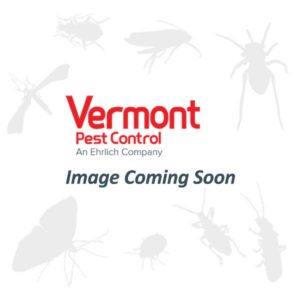Little Black Ants in Vermont
Little black ants are a common structural pest and are highly adaptable. Although they are not typically associated with indoor colonies, little black ants will make their way indoors when foraging for food. Omnivores, feeding on both plant and animal foods, little black ants feed on sweets, meats, grease, insects, and even feed on bird feces. Little black ants can be tough to control due to the tiny size of foraging workers, and that indoor nesting sites are generally in hard-to-reach areas like wall voids, underneath carpeting, and within woodwork.
Little Black Ant Habitat
Colonies of little black ants may contain several queens and be heavily populated. In general, little black ant infestations start outdoors. Infestations can be traced back to mulch, stones, a stump, tree, log, fence, or pile of lumber or bricks. Indoors, little black ants nest in wall voids and cabinets, as well as, within and behind foundations and brick or stone veneer. When colony populations are at their peak, little black ants may spread throughout a structure quickly, invading every gap and crack or crevice. The sight of little black ants inside homes may signal a larger infestation outdoors or within the structure.
Little Black Ant Behaviors, Threats, or Dangers
Despite the fact that little black ants have a small stinger that doesn’t really do any damage, they can become a considerable pest when they invade a home in large numbers. While they prefer outdoor locations for nesting, their small size allows them to gain access under window sills, beneath carpets and floorboards, and any crevice inside your home. Also a pest of stored food items, residents take notice when little black ants invade kitchen cupboards and pantries in search of food. If a little black ant infestation is suspected, it is recommended to consult a licensed ant exterminator.
Need help with Little Black Ants?
We'll call you! Leave your information below.



